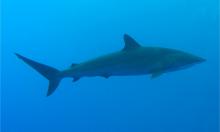Youngest planet discovered
NASA scientists announced they had found the youngest planet known to man, the new arrival was greeted with great excitement by stargazers. "It knocked our socks off," admitted Ed Churchwell, astronomer at the University of Wisconsin.
In earthly terms, it's as old as the hills but - in the stellar scheme of things - one million years is a mere babe in arms.
A telltale gap in the Taurus constellation, 420 light years from Earth, spied through Nasa's infrared Spitzer space telescope, was enough to prove the existence of a gaseous planet less than a million years old.
Compared to the youngest planets known before now, which are several billion years old - and the earth itself, which is thought to be more than 4.5 billion years old - it represented a planetary body in its infancy.
The Spitzer - launched last August as a £2bn replacement for the Hubble space telescope - saw the clearing while it was examining the disc-shaped dust cloud around a young star called Coku Tau 4, reports independent.co.uk
According to technewsworld.com the object is in the constellation Taurus, 420 light-years away -- quite close by astronomy standards. It is believed to be on the inner edge of a planet-forming dusty disk that encircles a 1-million-year-old star. By comparison, the Earth and the rest of the solar system are 4.5 billion years old. And up until now, the youngest planets observed around other stars were a few billion years old.
Astronomer Deborah Padgett at the Carnegie Institution of Washington cautioned that instead of a planet, the gap in the dusty disk could be caused by asteroid formation or a smaller unseen stellar companion. She said it is also possible that the heat and light of the star are forming the gap by blowing all the dusty material out. However, she said that it is "very likely" a planet, and that additional research by Spitzer and future spacecraft should settle the debate.
University of Rochester astronomer Dan Watson said a sharply defined hole in the middle of the disk suggests that a planet created the opening. That gaseous planet would have been formed sometime since the star's formation.
Spitzer also spied two of the faintest planet-forming disks ever seen in a stellar nursery, 13,700 light-years from Earth. Dubbed RCW 49, the region encompasses some 300 newborn stars. "Preliminary data suggest that all 300 or more stars harbor disks," remarks team member Ed Churchwell of the University of Wisconsin in Madison, "but so far we’ve only looked closely at two." The additional details that Spitzer can offer about planet-forming disks should provide scientists with a better understanding of how solar systems like ours evolve, inform sciam.com
Subscribe to Pravda.Ru Telegram channel, Facebook, RSS!





